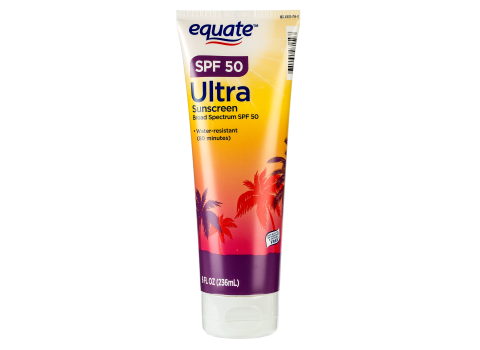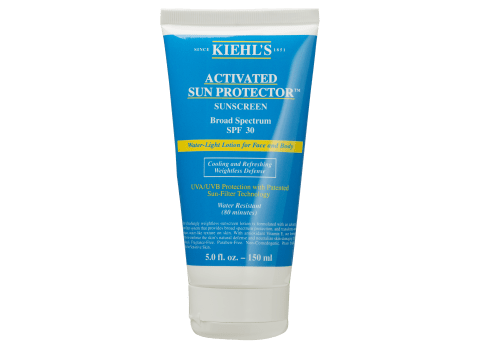How to Stay Safe During a Heat Wave
Scorching temperatures and high humidity—especially together—can pose serious health risks. Here's how to protect yourself.

By Catherine Roberts
Extreme heat can be a killer. In fact, according to the Centers for Disease Control and Prevention, more than 600 people die each year in the U.S. due to extreme heat, often from heatstroke, which occurs when the body’s temperature reaches 104° F or higher.
But often people don’t realize how dangerous extreme heat can be. “It doesn’t come in toppling down trees or damaging homes,” says Michelle Hawkins, Ph.D., chief of the National Weather Service’s Severe, Fire, Public, and Winter Weather Services Branch. “It’s not the type of thing you can see coming at you, but it’s still very deadly and very dangerous.”
Average temperatures have been rising in recent years—July 2021 was the hottest month ever recorded worldwide—and stretches of abnormal heat seem to be more common these days. The years 2013 to 2021 were all among the 10 hottest ever recorded. Over the next few days and weeks, several states in the U.S. are facing warnings of extreme heat waves.
A major report from the federal government’s U.S. Global Change Research Program found that heat waves, or six consecutive days of extremely high temperatures, have been increasing in frequency since the 1960s. And they’re expected to continue being more frequent and more intense.
The heat can affect anyone, but older adults, young children, and people with chronic illnesses are most at risk for serious problems. Simple precautions can help keep you safe. Here’s what experts say are the most important safety steps to take during extreme heat.
Check the Heat and Humidity
There’s no temperature that’s considered the threshold for danger. That’s in part because humidity also needs to be considered: The more humid the air, the longer it takes for sweat to evaporate, and it’s the evaporation process that helps the body cool down.
(In fact, the heat index—a term you might hear in a weather report—is a measure of how hot it feels outside when factoring in humidity and temperature.)
In addition, people who live in warmer climates are acclimated to higher temperatures than those in colder regions, Hawkins says. So what’s considered normal in those areas might be unusually hot in another.
To get heat and humidity information and forecasts for your area, check your local news or go to the National Weather Service’s website and type in your ZIP code.
When you do, you might hear or read about one or more kinds of temperature cautions. A heat advisory signals that a high heat index is forecast for the next one to two days based on your area’s usual climate, and an excessive heat warning means that high heat index will linger for two days or longer, according to Hawkins. (A heat advisory is triggered at a lower heat index than an excessive heat warning.) A heat watch means excessive heat is likely to occur in the area within a few days.
Take Steps to Stay Cool
If your area is experiencing extreme heat, stay in air-conditioned spaces as much as possible, especially during the warmest parts of the day, typically 10 a.m. to 5 p.m. (PDF).
And don’t underestimate how hot it can get indoors without AC. A 2014 study in the journal Science of the Total Environment of 285 low- and middle-income New York City homes found that heat conditions indoors had the potential to reach hazardous levels—which the researchers defined as a heat index of at least 93° F—during heat waves.
That electric fan might not do the trick, either. According to the New York State Department of Health, at indoor temperatures in the high 90s, fans aren’t effective at cooling.
When AC at home isn’t an option, air-conditioned public spaces, such as movie theaters and libraries, can offer a respite. Check with your local public health department about whether any cooling centers (air-conditioned spaces open to the public) are available in your area; some may still require masks and social distancing.
Inside or out, dress in lightweight, light-colored, breathable clothing. Outdoors, consider adding a wide-brimmed hat, and use sunscreen. Sunburn increases your risk of skin cancer and can hinder your body’s ability to cool itself. Also, be sure to take frequent breaks in an air-conditioned space.
On sultry days, take it easy on outdoor physical activity, too. Leave major outdoor projects until the heat wave breaks, if you can, and do vigorous activity during the coolest parts of the day.
Early morning is best, says Robert McLean, M.D., a past president of the American College of Physicians, because the heat of the day can be slow to dissipate in the evening.
Check out a few of our top-rated sunscreens:
La Roche-Posay Anthelios Melt-In Milk Lotion SPF 60

Equate (Walmart) Ultra Lotion SPF 50

Kiehl's Activated Sun Protector Lotion SPF 30

Stay Well-Hydrated
Usually, letting your thirst to tell you when to drink is a good strategy for staying hydrated. But during an extreme heat event, the CDC advises upping your water intake.
There’s no recommended amount, but make sure you’re sipping regularly, even if you don’t feel thirsty. (If your doctor has told you to restrict fluid intake for medical reasons, ask how you should stay hydrated during extreme heat.)
Water is your best bet for hydrating. Most people don’t need to drink sports drinks, which may contain a lot of added sugars. And avoid dehydrating alcoholic beverages. You can also get water through food, including a variety of fruits and vegetables.
During a heat wave, consider bringing water with you wherever you go, McLean says. That can help you avoid getting stuck in a situation where you’re without it, such as having your car break down on a hot road.
If you notice signs of dehydration, including increased thirst, dry mouth and tongue, restlessness or irritability, decreased urine, or skin slow to move back into place when pinched, drink more fluids right away. If you haven’t urinated in several hours or you’re producing very dark urine, contact a doctor.
Keep an Eye on Those at Higher Risk
Certain groups of people are more prone to heat-related problems. They include older adults and young children, whose bodies aren’t as adept at regulating their temperature, and people with certain chronic medical conditions, including diabetes and cardiovascular disease.
Those who have asthma or chronic obstructive pulmonary disease might experience more breathing problems in the extreme heat, McLean says, and should watch the forecast for air-quality advisories along with extreme heat events.
Certain medications, including diuretics, can also hike the risk of heat-related illnesses.
If you have older relatives or neighbors, call or stop by to check on them frequently during a heat wave. And never leave an infant or child alone in a hot car, even for a few minutes. (The same goes for pets.) If you have a child in the back seat, keep a visual reminder of his or her presence in the front seat, such as a diaper bag or jacket. (Read “Research Shows That Anyone Could Forget Kids in Hot Cars” for more tips.)
Know the Signs of Heat-Related Illness
Here’s what to look for and what to do:
Heat cramps: These painful muscle cramps are often a result of a lot of strenuous activity in the heat. Drinking juice or a sports drink to replenish lost fluid and salt, and resting for a few hours, can help.
Heat exhaustion: Signs of heat exhaustion include feeling tired, weak, or dizzy; sweating heavily; nausea and vomiting; and pale skin. If you notice any of these symptoms, stop what you’re doing, rest, hydrate, and try to cool your body down by getting into air conditioning if you can, or taking a cool bath or shower. If left untreated, heat exhaustion can progress to heatstroke, according to the CDC.
Heatstroke: This condition, which can be fatal, occurs when your body’s mechanism for cooling itself becomes overwhelmed and your temperature rises to 104° F or higher. Signs include confusion or an altered mental state, nausea, red and hot skin, being unable to sweat, a throbbing headache, and/or fainting.
If you suspect that you (or someone else) are suffering from heatstroke, call 911 immediately and begin to try and cool down. Sports teams may keep a tub of ice water on hand for you to submerge parts of your body. Other options include spraying yourself (or someone else) with a garden hose, getting into a cool shower, or sponging down with cool water.
Best Window Air Conditioners from CR's Tests
When the heat rises, you’ll appreciate the cooling power of a window air conditioner. Even if you have central AC, there may be places in your house that aren’t getting the full benefit and need a little help. Here are the top-performing small, medium, and large window ACs from our tests.
More from Consumer Reports:
Top pick tires for 2016
Best used cars for $25,000 and less
7 best mattresses for couples
Consumer Reports is an independent, nonprofit organization that works side by side with consumers to create a fairer, safer, and healthier world. CR does not endorse products or services, and does not accept advertising. Copyright © 2022, Consumer Reports, Inc.

